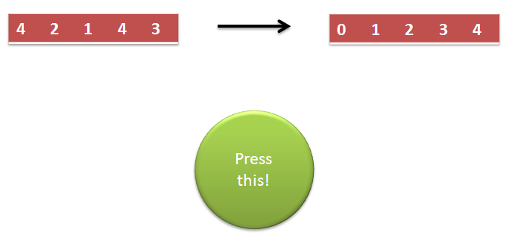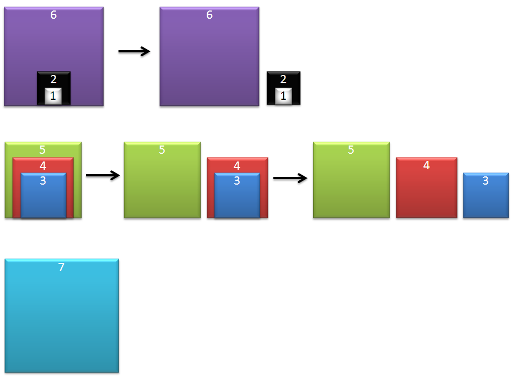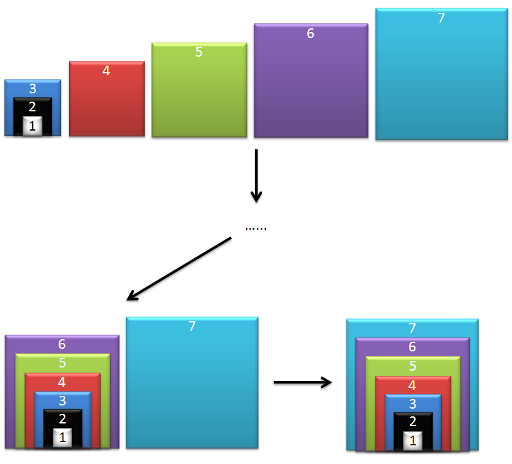What are generators?
Generators are helper programs that output test. Most programming task usually has a large input (for example, an array of up to $$$2 * 10^5$$$ elements, a tree of up to $$$10^5$$$ vertices), so it's not possible to add all the tests manually. In these cases, generators come to the rescue.
If you are writing a generator in C++, it is recommended to use the testlib.h library.
Types of generators
There are two types of generators:
- Single-test generator: output exactly one test in a single run. Usually, to generate several tests, one must run the generator several times with different command line parameters. Such generators output the test to the standard output stream (to the screen).
- Multiple-test generator: output many tests in a single run. Such generators output tests to files (one file for each test).
An example single-test generator with testlib.h
The following generator output a pair of integers with each element from $$$1$$$ to $$$n$$$ — where $$$n$$$ is a command line parameter passed to the generator.
#include "testlib.h"
#include <iostream>
using namespace std;
int main(int argc, char* argv[])
{
registerGen(argc, argv, 1);
int n = atoi(argv[1]);
cout << rnd.next(1, n) << " ";
cout << rnd.next(1, n) << endl;
}
Why testlib.h?
On the surface, it seems that testlib.h is not necessary to write a generator. This is not true. Almost all generators need to generate random values, and it is tempted to use rand(). However, this is a bad practice. A basic principle of writing generators is that: a generator must output the same test when compiled by any compiler on any platform if it is run in the same way (using the same command line parameters). When using rand() or C++11 classes like mt19937/uniform_int_distribution, your program will output different tests when compiled with different compilers.
The random value generator in testlib.h ensures that the same value is generated regardless of the (test) generator and platform. Besides, testlib.h has various conveniences for generating tests, for example, rnd.next("[a-z]{1,10}") will return a random word of length $$$1$$$ to $$$10$$$ from letters a to z.
Translator's note: There are more issues with using rand() aside from the above one. Refer to this blog for a detailed explanation about these issues.
Available method
To initialize a testlib generator, the first line of your generator must be of the form registerGen(argc, argv, 1); (where 1 is the version of the random number generator used). After that, it will be possible to use the rnd object, which will be initialized with a hash from all the command line arguments. Thus, the output of g 100 and g.exe "100" will be the same, while g 100 0 will be different.
rnd is of type random_t. That is, you can create your own generator, but this is not necessary in most of the cases.
rnd has many useful member functions. Here are some examples:
| Call | Return value |
|---|---|
| rnd.next(4) | An equiprobable random integer from $$$0$$$ to $$$3$$$ (inclusive) |
| rnd.next(4, 100) | An equiprobable random integer from $$$4$$$ to $$$100$$$ (inclusive) |
| rnd.next(10.0) | An equiprobable random real number in the half-interval $$$[0; 10)$$$ |
| rnd.next("one|two|three") | An equiprobable random word out of 'one', 'two' and 'three' |
| rnd.next("[1-9][0-9]{99}") | An equiprobable random 100-digit number as a string |
| rnd.wnext(4,t) | wnext is a method of obtaining an uneven distribution (with a biased expectation), the parameter t denotes the number of calls to the maximum operation for similar next calls. For example rnd.wnext(3, 1) is equivalent to max(rnd.next(3), rnd.next(3)), and rnd.wnext(4, 2) is equivalent to max(rnd.next(4), max(rnd.next(4), rnd.next(4))). If t < 0, then -t will find the minimum. If t = 0, then wnext is equivalent to next. |
| rnd.any(container) | A random element of the container container (with random access via an iterator), for example, it works for std::vector and std::string |
Also, please do not use std::random_shuffle, use the shuffle from testlib.h instead. It also takes two iterators, but works using rnd.
Translator's note: If my understanding is correct, rnd.wnext is defined as follows:
Example: generating an undirected tree
Below is the code of an undirected tree generator that takes two parameters — the number of vertices and the 'elongation' of the tree. For example:
- For $$$n = 10$$$, $$$t = 1000$$$, a path graph (degree of all vertices are at most $$$2$$$) is likely to be generated
- For $$$n = 10$$$, $$$t = -1000$$$, a star graph (there's only one non-leaf vertex in the tree) is likely to be generated.
registerGen(argc, argv, 1);
int n = atoi(argv[1]);
int t = atoi(argv[2]);
vector<int> p(n);
/* setup parents for vertices 1..n-1 */
for(int i = 0; i < n; ++i)
if (i > 0)
p[i] = rnd.wnext(i, t);
printf("%d\n", n);
/* shuffle vertices 1..n-1 */
vector<int> perm(n);
for(int i = 0; i < n; ++i)
perm[i] = i;
shuffle(perm.begin() + 1, perm.end());
/* put edges considering shuffled vertices */
vector<pair<int,int> > edges;
for (int i = 1; i < n; i++)
if (rnd.next(2))
edges.push_back(make_pair(perm[i], perm[p[i]]));
else
edges.push_back(make_pair(perm[p[i]], perm[i]));
/* shuffle edges */
shuffle(edges.begin(), edges.end());
for (int i = 0; i + 1 < n; i++)
printf("%d %d\n", edges[i].first + 1, edges[i].second + 1);
How to write a multiple-test generator?
A multiple-test generator in one execution can output more than one test. Tests by such a generator are output to files. In the generator on testlib.h it is enough to write startTest(test_index) before the test output. This will re-open (freopen) the standard output stream to a file named test_index.
Please note that if you are working with the Polygon system, in this case, you need to write something like multigen a b c > {4-10} in the script (if it is assumed that starting the multiple-test generator will return tests 4, 5, 6, 7, 8, 9, and 10).
Other notes about generators
- Strictly follow the format of the test — spaces and line breaks should be placed correctly. The test should end with a line feed. For example, if the test consists of a single number, then output it as
cout << rnd.next (1, n) << endl;— with a line feed at the end. - If the test size is large, it is prefered to use
printfinstead ofcout— this will improve the performance of the generator. - It is better to use
coutto outputlong long, but if you wantprintf, then use theI64constant (for example,printf(I64, x);). - Please be awared about various cases of C++ undefined behavior. For example, in the first example generator above, if the two
coutcommands are combined into one, the order of thernd.nextfunction calls is not defined.
Translator's note: about the third point, using lld constant with printf to output long long used to be problematic in the past, but is no longer an issue now.
Further examples
Further examples of generators can be found in the release notes or directly at the GitHub repository.









 ), so each maximum flow calculation will be done in less than
), so each maximum flow calculation will be done in less than  )?"
)?"







